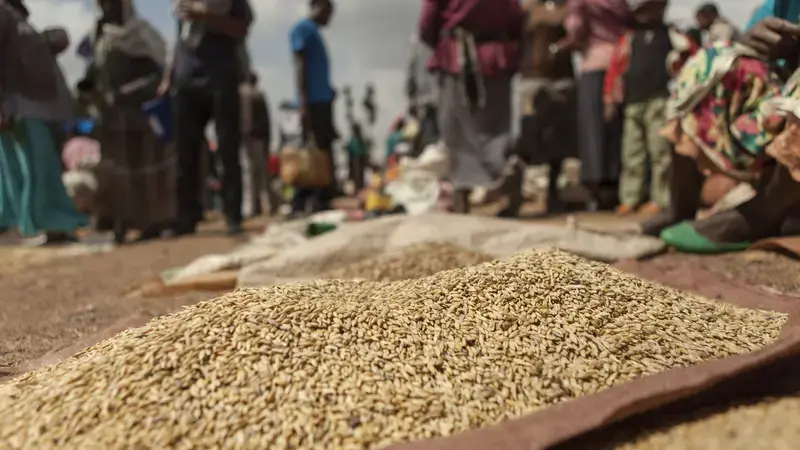A game-changing land management strategy for Ethiopia, and beyond?

In the highlands of Ethiopia ICARDA efforts to reverse land degradation and strengthen community adaptation to climate change promise multiple benefits for rural communities. Lessons learned here could have far-reaching implications for millions of people worldwide.
Deforestation is a major driver of land degradation and soil erosion in the Highlands of Ethiopia – challenges that undermine farmer adaptation to climate change and the combined threat of water scarcity, temperature extremes, and unreliable rainfall patterns. The Gondar region of Amhara Province is one of the worst affected.
Forests in this corner of North-Western Ethiopia have disappeared at a rapid rate in recent decades – cleared to make way for firewood and the production of crops like teff, sorghum, and chickpea. Between 1986 and 2007, the region lost some 30 percent of its forest cover, and the consequent soil erosion has been devastating for local agriculture: even on moderate slopes, annual soil loss during the rainy season exceeds 10 tons per hectare (t/ha) – and can often be as high as 20 t/ha.
To reverse this situation, an initiative funded by the Austrian Development Agency and managed by ICARDA and the Amhara Regional Agricultural Research Institute, is promoting integrated adaptive strategies that acknowledge the complexity of the challenges facing Gondar communities.
Assessing current threats – to better target interventions
As a first step, the initiative used hydrological and bio-economic models - made available by the CGIAR Research Program on Water, Land and Ecosystems - to assess the impact of climate and land-use changes on watershed processes, helping to identify soil erosion hotspots, land cover changes and deforestation dynamics, and the factors constraining local livelihoods. Simulations are based on a unique dataset compiled over the past five years, measuring: run-off rates, sediment yields, nutrient losses, and socio-economic baseline data.
Prioritizing research activities and actions
This has helped prioritize research activities and the development of technologies and practices tailored to local environmental conditions and farmer requirements. Activities address the following four priority areas:
- Assessing the impact of soil conservation measures (stone bunds)
- Developing water-harvesting and supplemental irrigation techniques to increase farmer resilience to climate variability
- Enhancing land productivity through resilient crop varieties and farming practices, including conservation agriculture
- Enhancing livestock production through improved management, better crop-livestock integration, and value chain development.
Communities are at the center of this process – playing a key role in decision-making and contributing to the development of solutions. Efforts to reduce soil erosion, enhance soil health, improve crop and livestock productivity, and slow deforestation are set to benefit an estimated 4000 people. Success here will create a sound basis to draft recommendations for scaling-up across Ethiopia and beyond so that other communities and regions have the tools and strategies required to effectively fight the effects of climate change.
